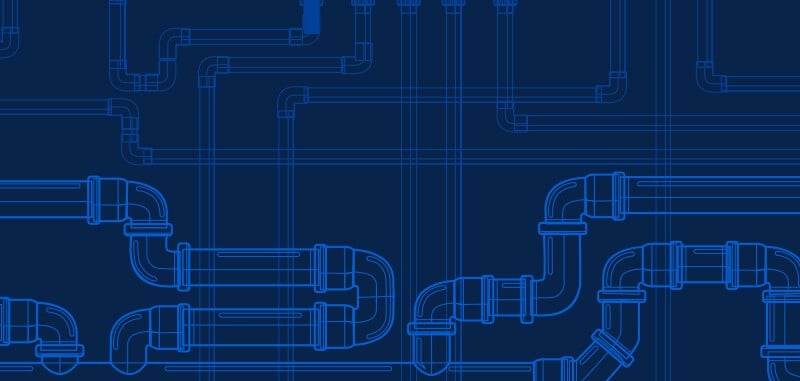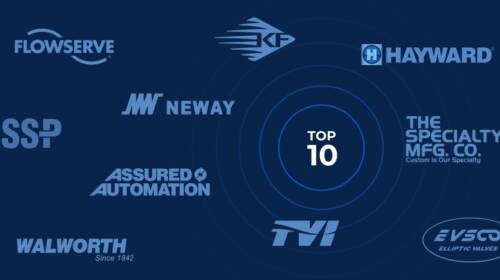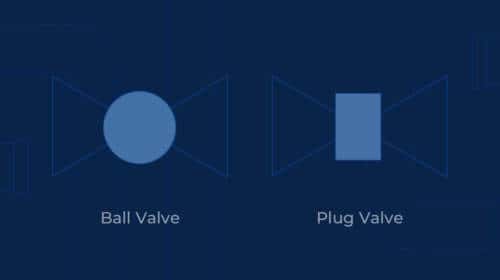Valve Position Sensors & Feedback Systems Explained

What is a Valve Position Sensor?
Valve sensors are instruments used to indicate the position of a valve. For example, when installed on a shutoff valve like a ball valve, sensors such as limit switches are used to indicate whether the valve is fully open or fully closed. Other types of position sensors may also be used to communicate real time position data throughout the rotation of the valve.
Valve position sensor readouts can be displayed via lights, dials with hands or digital screens. In more complex systems, the limit switch or position sensor will wire directly into the programmable logic system (PLC) or data acquisition system (DAQ) in order to automate processes when the valve reaches a certain position.
There are currently a wide variety of valve position feedback sensors available, designed to fit all manner of process systems.
Many electric actuators, including all Gemini Valve Electric Actuators, have position feedback built into the actuator terminal block. In this case the PLC equipment or auxiliary lights can be wired directly into the actuator terminal block for position sensing.
Importance of Valve Position Feedback
Position feedback sensors are critical communication tools that help operators and system engineers control and understand their systems. Sensors provide real-time information on valve positions, which is crucial in the age of increased automation.
An automated system operates at maximum efficiency not only when all components work properly, but when operators receive real-time, accurate data. Valve position sensors transmit feedback that helps operators keep systems running smoothly and even speeds up production.
Position sensors can also be an important safety feature. They are especially critical for applications in which severe damage or injury can occur if the valve is in the incorrect position when other application processes engage.
Common Valve Position Sensor Applications
Valve position feedback sensors are common in automated systems, where they support proper system function and convey real-time information to operators. Position sensors are common on actuators in power generation, mining, food processing, chemical manufacturing industries and many more.
There are sensors available for all types of actuators — hydraulic, pneumatic and electrical. In their most basic form position sensors simply provide visual feedback that the valve is either open or closed. In more complex systems position sensors provide feedback directly to PLC equipment to automate certain tasks when the valve is either opened or closed. Position sensors on control valves contain more complex mechanisms, as they require the ability to determine precisely how open the valve is to regulate the media flow rate.
Types of Valve Position Sensors
Rotary position sensors are the most common type of sensor used to detect valve position, since they are designed to translate rotary position into electrical signals. Rotary position sensors are used in applications that require frequent adjustments in position or speed.
System engineers use four general criteria categories to determine their choice of sensor technology:
Contacting or non-contacting
Contacting sensors, known as potentiometers, incorporate a mechanical wiper that will vary resistance proportionally to position, thus creating an adjustable voltage divider. The divider conveys the measure of position via electric signal, which is converted into a readout.In non-contacting sensors, the physical contact is eliminated, and the valve position is relayed via magnetic field. The strength of the magnetic field will vary throughout the valve’s cycle. A change in the magnetic field will produce a voltage difference through a theory known as the “Hall Effect.” This voltage can be measured by an integrated circuit (IC) to determine valve position. The absence of a mechanical component extends the life of a non-contacting sensor, since it avoids wear and tear associated with mechanical contact.
Single-turn or multi-turn capability
Single-turn sensors measure the position of a single-turn valve (like a ball valve), wherein the valve turns less than 360° (usually 90°) to stop and start media flow.A multi-turn sensor can measure the position of a valve that needs to turn multiple times to open or close. Examples include globe or gate valves, which require multiple 360° rotations to fully stop or start media flow.
Analog or digital output
Analog position sensors, such as potentiometers and Hall Effect sensors, measure valve position continuously to allow precise position control of the valve. Digital sensors, such as limit switches, only provide on/off position feedback. Mechanical sensors rely on contacting technology and display readouts via a dial. While this type of sensor may be simple, it may not always provide complete accuracy and does not communicate with PLCs or DAQs.
Digital sensors can communicate directly with the PLC, whereas analog signals require an analog-to-digital converter (A/D circuit) to translate the analog output to digital data. Typically, however, the A/D circuit is built directly into the PLC or DAQ meaning no additional A/D circuit is required.
Signals communication
The choice between analog or digital signal is dependent on the system requirements. If the application requires continuous and precision feedback of the valve position you will require an analog signal. For control valve applications digital is the simpler option and may provide slightly faster communication with the PLC or DAQ. As mentioned above, it’s possible to convert an analog signal to digital, but it requires additional circuitry and adds valuable seconds to the data collection process. No matter the interface you use, it’s important that your communication protocols are flexible.
How to Choose the Correct Valve Sensor
When considering valve position sensors, choose the type that is best suited to the environment and application. That means ensuring compatibility with actuator type, available space, environmental conditions and extent of automation.
Here are some important factors to help you compare options:
Contact
| Contacting technology | Non-contacting technology |
| Provides high precision and reliability. | Lasts longer under conditions such as extreme temperatures, vibration, shock and the presence of foreign particles. |
Measurement Signal
| Analog | Digital |
| Allows for precise feedback on valve position through the valve cycle. | Provides on / off position feedback only. Reduces complexity of signal conversion and offers flexibility in digital systems. |
Adjustment Type
| Fine adjustment | Coarse adjustment |
| Used on control valves to determine the precise position of the valve. | Used to denote when the valve is either on or off. Common on ball valves and butterfly valves. |
Cost
| Contacting technology | Non-contacting technology |
| Less expensive up front. | More expensive, but less prone to wear and tear and longer lasting.Offers digital communication, self-diagnostic abilities and enhanced energy efficiency. |
When choosing a position sensor for an automated valve, it’s a good idea to stick with the solution provided by the actuator manufacturer to ensure compatibility. This is especially important for automated systems with critical applications in which a malfunctioning position indicator could have severe consequences. Consider domestic, high quality products from manufacturers that conduct 100% of the testing at their own facility.



